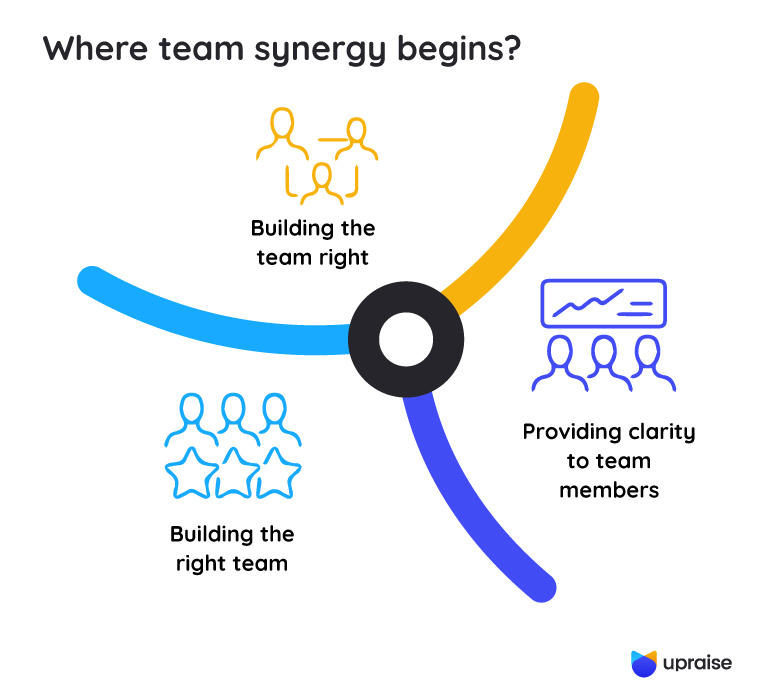Team Synergy
What is Team Synergy?
Definition:
Team synergy refers to the collaborative interaction and harmonious cooperation among members of a group or team to achieve common goals or objectives. It involves leveraging the collective strengths, skills, and perspectives of team members to enhance productivity, creativity, and overall performance.
Analogy:
Think of team synergy as a well-rehearsed orchestra, where each musician contributes their unique talents and expertise to create a harmonious and captivating performance. Just as the conductor coordinates the efforts of individual musicians to produce beautiful music, team synergy orchestrates the collective efforts of team members to achieve exceptional results.
Further Description:
Team synergy encompasses several key elements essential for effective teamwork and collaboration:
Communication: Open, transparent, and effective communication is crucial for fostering synergy within a team. Clear communication channels allow team members to share ideas, provide feedback, and resolve conflicts constructively.
Trust and Respect: Mutual trust and respect among team members create a supportive and inclusive environment where individuals feel valued and empowered to contribute their best efforts.
Shared Goals and Vision: Aligning team members around common goals and a shared vision fosters a sense of purpose and commitment to collective success.
Diversity and Inclusion: Embracing diversity of thought, backgrounds, and perspectives enriches team dynamics and promotes innovation and creativity.
Collaboration and Cooperation: Encouraging collaboration and cooperation enables team members to leverage each other’s strengths and expertise to overcome challenges and achieve objectives.
Why is Team Synergy Important?
Enhanced Performance: Team synergy harnesses the collective talents and energies of individuals, leading to higher levels of productivity, creativity, and innovation.
Improved Problem-Solving: Collaboration fosters diverse viewpoints and approaches to problem-solving, resulting in more effective solutions and better decision-making.
Increased Morale and Engagement: A synergistic team environment promotes a sense of belonging, satisfaction, and motivation among team members, leading to higher levels of engagement and morale.
Resilience and Adaptability: Teams with strong synergy are better equipped to navigate change, overcome obstacles, and adapt to evolving circumstances with agility and resilience.
Examples and Usage:
Cross-Functional Teams: In organizations, cross-functional teams comprised of individuals from different departments or disciplines collaborate to tackle complex projects or initiatives.
Sports Teams: Successful sports teams demonstrate synergy through coordinated efforts, trust, and cooperation among players to achieve victory on the field or court.
Creative Teams: Design teams, marketing teams, and other creative groups rely on synergy to generate innovative ideas, solve design challenges, and deliver compelling solutions.
Key Takeaways:
- Team synergy is the collaborative interaction and harmonious cooperation among team members to achieve common goals.
- Elements of team synergy include communication, trust, shared goals, diversity, and collaboration.
- Benefits of team synergy include enhanced performance, improved problem-solving, increased morale, and adaptability.
- Examples of team synergy include cross-functional teams, sports teams, and creative teams working together to achieve success.
Table of Contents





